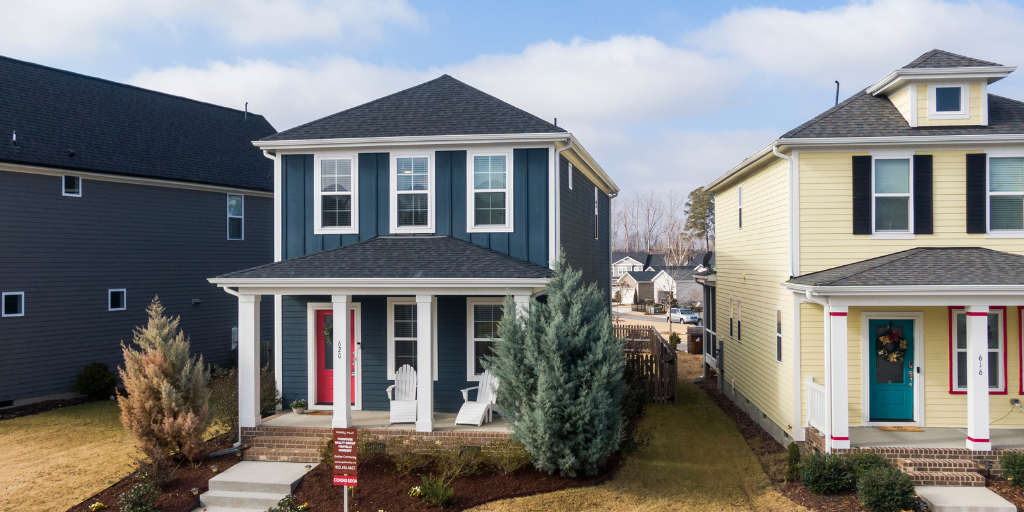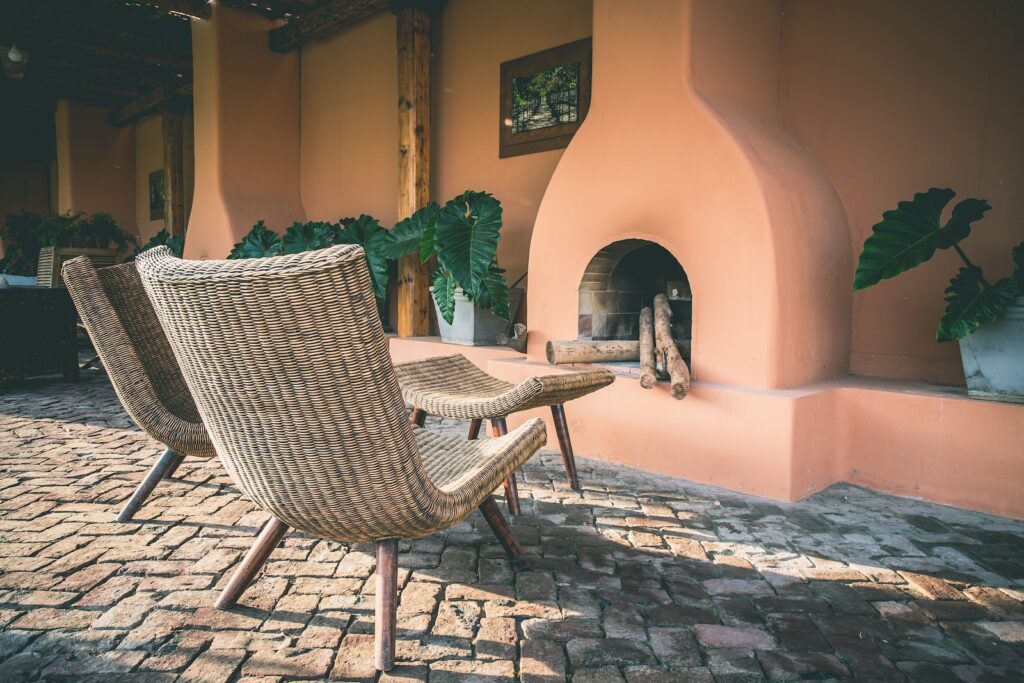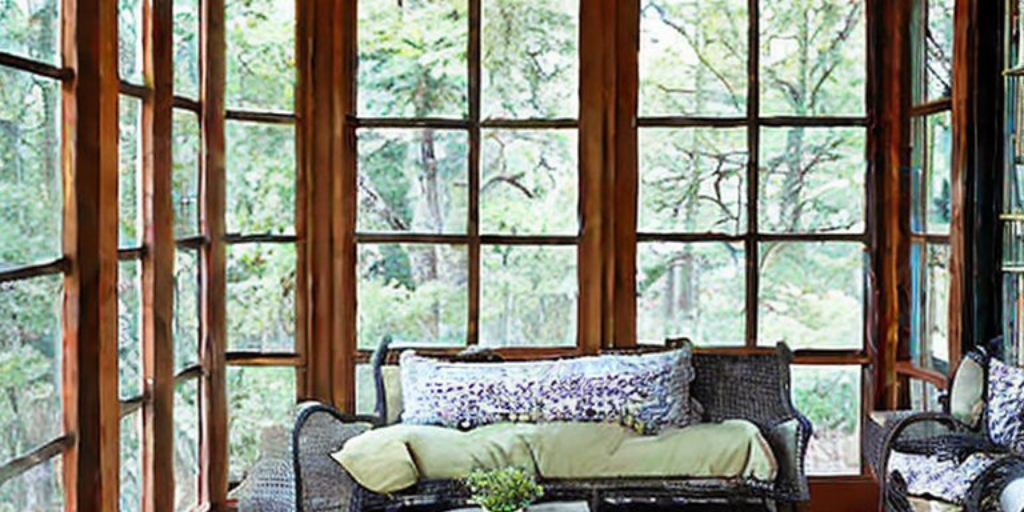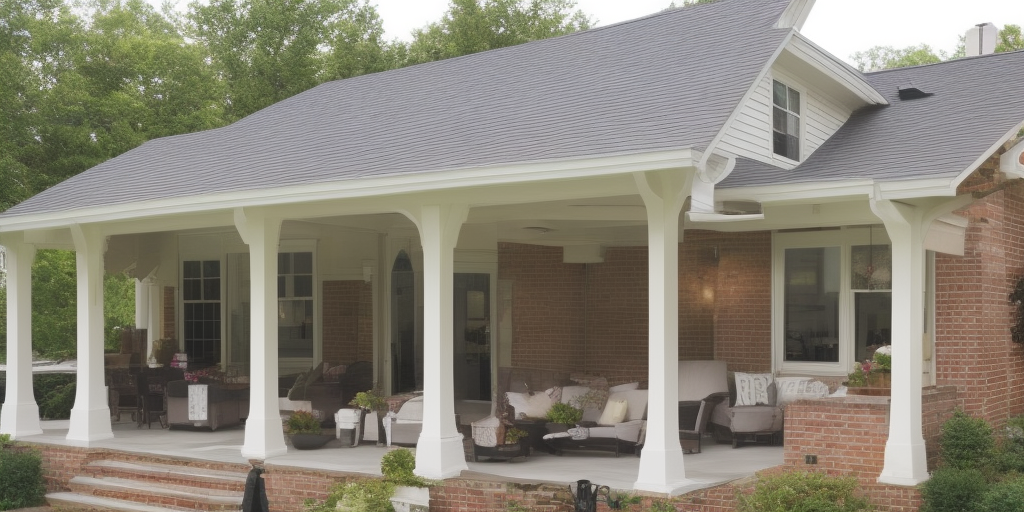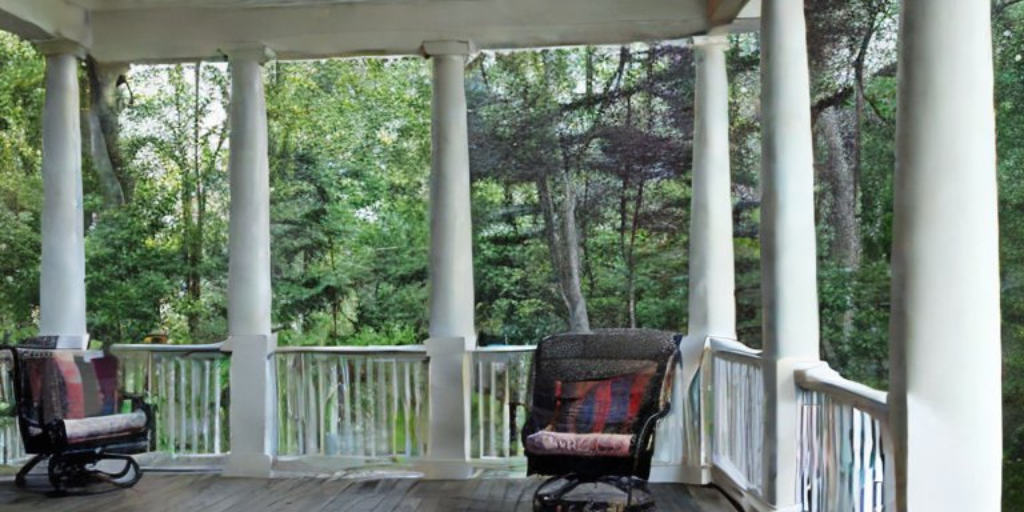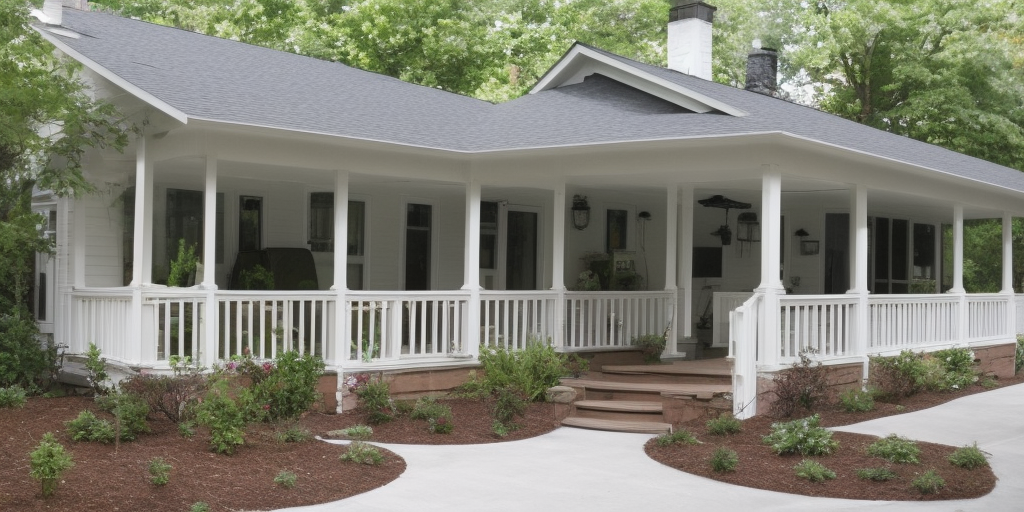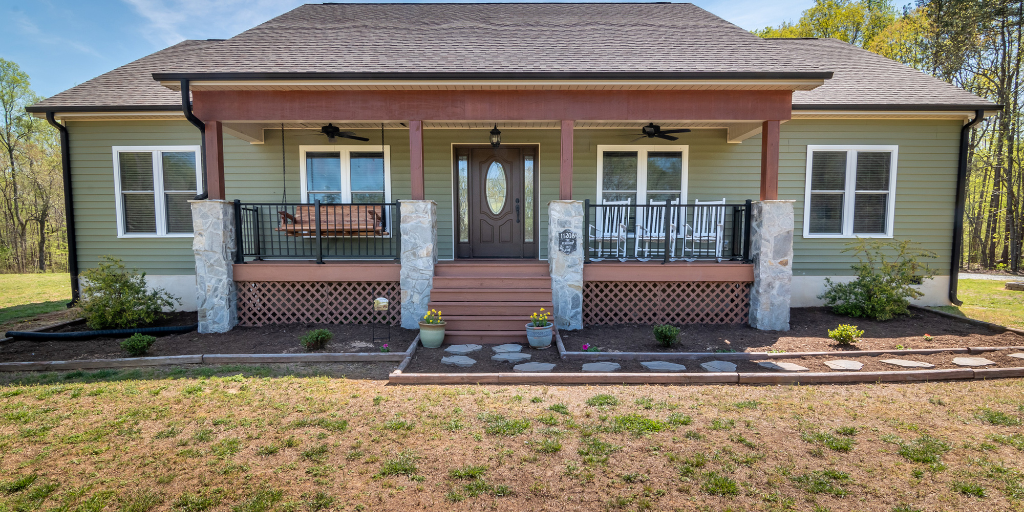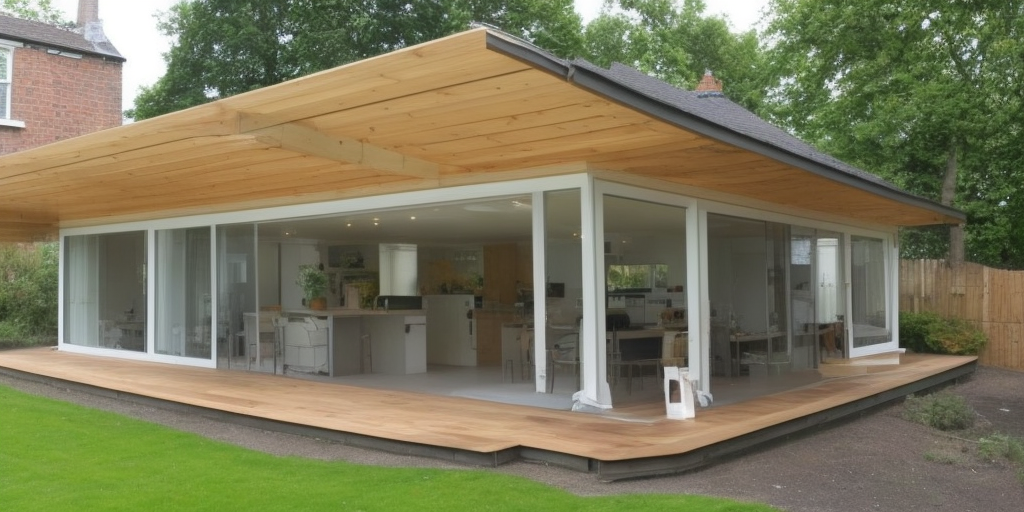How much does a porch increase home value may be on your mind when looking to sell a home. A porch can enhance the appearance of a home, provide additional living space, and create a comfortable outdoor area for relaxation and entertainment.
But, does it also increase the value of a home? In this post, we will explore the various factors that determine how much value a porch can add to a home or if it actually does add value.
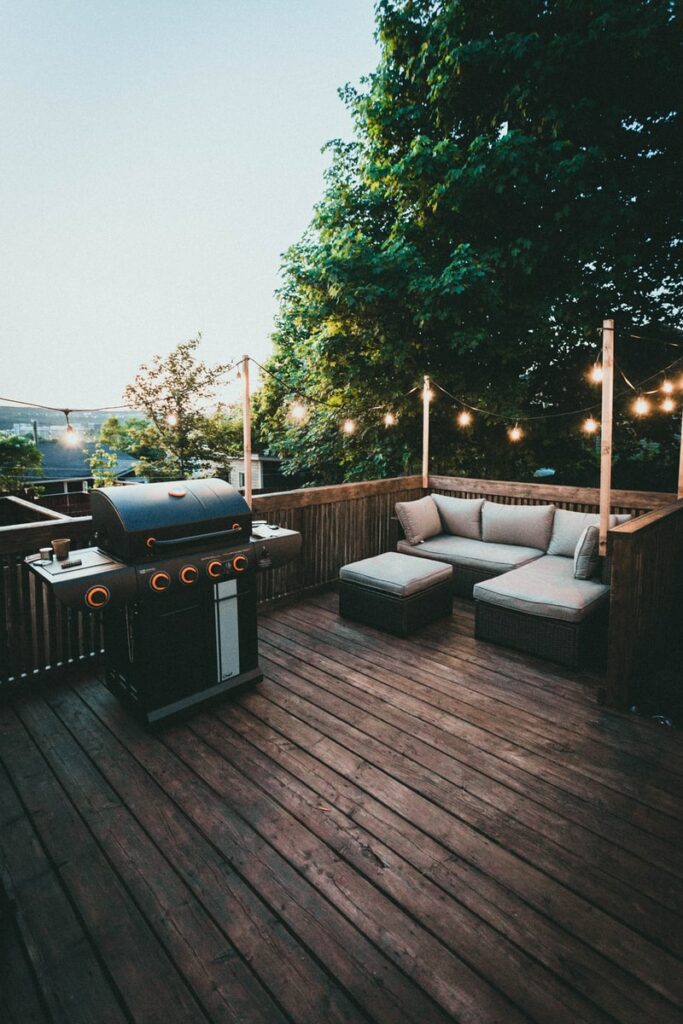

What is the average increase in home value after adding a porch?
Contents [hide]
- 1 What is the average increase in home value after adding a porch?
- 2 How does the size of a porch impact the increase in home value?
- 3 What are the best materials to use for a porch to increase home value?
- 4 Does the location of a home impact the increase in value from a porch?
- 5 How important is porch design in increasing home value?
- 6 Can adding a porch decrease a home’s value in some cases?
- 7 What is the ROI for adding a porch to a home?
- 8 What is the cost vs. value of adding a porch to a home?
- 9 How much does the local real estate market impact porch-related home value increases?
- 10 Are there any tax benefits to adding a porch to a home?
- 11 How long does it take for a porch to pay for itself in increased home value?
- 12 Do screened-in porches increase home value more than open-air porches?
- 13 How much do porch renovations impact home value compared to new porch construction?
- 14 What are some easy and affordable ways to increase a porch’s impact on home value?
- 15 Cost of a screened-in porch
- 16 Cost of converting a three-season porch to a four-season room
- 17 Cost of adding a fireplace to a porch
- 18 Final thoughts on how much does a porch increase home value
The average increase in home value after adding a porch can vary depending on several factors such as the size of the porch, the materials used, and the location of the home. In general, a well-designed and well-built porch can increase a home’s value by 5% to 25%.
However, it’s important to note that simply adding a porch to a home does not guarantee an increase in value. The design and construction quality of the porch play a significant role in determining the level of value added.
The average cost of adding a porch to a home also varies widely depending on factors such as the size and materials used. As such, it’s important to carefully consider the potential increase in home value against the cost of the porch construction before undertaking any such project.
Additionally, homeowners should consider factors such as zoning restrictions, building codes, and homeowners’ association rules that may impact the construction of a porch on their property. By weighing these factors carefully and seeking out the guidance of qualified professionals, homeowners can make informed decisions about whether adding a porch is the right choice for them.
How does the size of a porch impact the increase in home value?
The size of a porch can have a significant impact on the increase in home value. In general, larger porches tend to increase a home’s value more than smaller ones. This is because larger porches provide more usable outdoor living space, which can be a highly desirable feature for potential homebuyers.
Additionally, larger porches can be used for a variety of activities, from outdoor dining to relaxation and entertainment, making them a versatile feature that can add significant value to a home.
However, it’s important to note that adding an excessively large porch may not always result in a significant increase in home value. A porch that is too large in proportion to the size of the home may look awkward and out of place, negatively impacting the home’s curb appeal.
Therefore, it’s important to carefully consider the size and design of a porch to ensure that it fits seamlessly with the home’s overall aesthetic and adds the maximum possible value. Ultimately, the size of a porch is just one of several factors that determine the value increase it can provide, and homeowners should consider all factors before deciding on the size and design of their porch.
What are the best materials to use for a porch to increase home value?
The porch is an essential part of any home, providing an outdoor space for relaxation and entertainment. If you’re looking to increase the value of your home, investing in a porch is a smart move. However, the materials you choose for your porch can significantly impact its value. Some of the best materials to use for a porch that will increase your home’s value include wood, composite, and brick.
Wood is a classic choice that adds warmth and character to your home. It’s durable, easy to work with, and has a timeless look that never goes out of style. Composite materials like Trex and AZEK offer the look of wood without the maintenance.
They’re resistant to rot, insects, and moisture, making them a great long-term investment. Brick is another popular option that adds a touch of elegance to your home’s exterior. It’s sturdy, weather-resistant, and can withstand the test of time.
Aside from the materials, the design and functionality of your porch can also increase your home’s value. Consider incorporating features like lighting, ceiling fans, and outdoor kitchens to make your porch an inviting space for relaxation and entertainment.
Don’t forget to choose furniture and accessories that complement your porch’s design and provide comfort and style. By investing in high-quality materials and thoughtful design, you can increase the value of your home while enjoying the benefits of a beautiful and functional porch.
Does the location of a home impact the increase in value from a porch?
Yes, the location of a home can have a significant impact on the increase in value from a porch. The desirability of a location is a key factor in determining the value of a home, and a porch can enhance the overall appeal of a property in certain locations. For example, if your home is located in a warm climate with a lot of outdoor activities, having a porch can be a major selling point.
Additionally, if your home is in a neighborhood where many homes have porches, adding a porch can increase the value and make your home more competitive in the market. On the other hand, if your home is in an area with harsh weather conditions, such as frequent storms or extreme temperatures, a porch may not be as valuable as other home features, such as a sturdy roof or energy-efficient windows.
Furthermore, the style and design of a porch should also match the overall aesthetic of the home and the neighborhood to maximize its value. For example, a modern, minimalist porch may not be as appealing in a traditional, historic neighborhood as a porch that is consistent with the area’s architectural style.
In summary, the location of a home can impact the increase in value from a porch, and it’s important to consider the local climate and neighborhood when deciding to add a porch to your home.
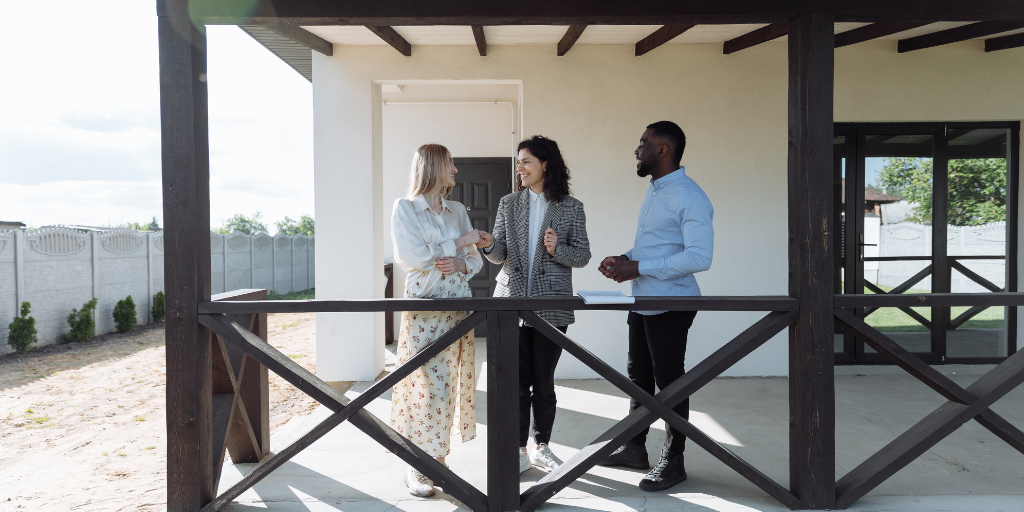

How important is porch design in increasing home value?
Porch design is an essential aspect of increasing home value. A well-designed porch can enhance the curb appeal of your home and create a welcoming and inviting outdoor space. The design of your porch should complement the architectural style of your home and the surrounding neighborhood.
It’s important to choose materials, colors, and finishes that match or complement the existing elements of your home. A porch that looks like an afterthought or doesn’t fit in with the overall aesthetic of the home can actually detract from its value.
In addition to aesthetics, functionality is also critical in porch design. A porch that is well-designed for the local climate and intended use can increase the home’s value. For example, a porch with proper lighting and outdoor heating can extend the use of the outdoor space throughout the year.
A porch that is well-positioned to take advantage of scenic views or privacy can also add value. By investing in thoughtful and functional porch design, homeowners can increase their home value and enjoy the benefits of a beautiful and practical outdoor space.
Can adding a porch decrease a home’s value in some cases?
Yes, in some cases, adding a porch can actually decrease a home’s value. One common reason for this is when the porch is poorly designed or constructed. For example, a porch that is poorly positioned on the property, too small or too large for the home, or made from cheap materials can detract from the home’s overall value. Additionally, if the porch is not well-maintained or is in disrepair, it can be a turnoff for potential buyers and lower the home’s value.
Another reason adding a porch may decrease a home’s value is when the porch is not consistent with the overall style and architecture of the home and neighborhood. For instance, a modern and sleek porch on a traditional or historic home may not fit in with the area’s overall aesthetic and can make the home appear unbalanced.
This can be a major turnoff for potential buyers and lower the home’s value. Therefore, when adding a porch, it’s important to ensure it’s well-designed, well-constructed, and consistent with the overall style and architecture of the home and neighborhood to avoid decreasing the home’s value.
What is the ROI for adding a porch to a home?
The return on investment (ROI) for adding a porch to a home can vary depending on several factors, including the materials used, the size and design of the porch, and the local housing market.
However, according to Remodeling Magazine’s 2021 Cost vs. Value Report, the national average ROI for a mid-range porch addition is about 54.9%, meaning homeowners can expect to recoup about 55% of the project cost in increased home value.
For a high-end porch addition, the average ROI is about 46.7%, indicating that homeowners can expect to recoup nearly half of the project cost in increased home value.
Moreover, the ROI for adding a porch can be higher in areas with warmer climates, where outdoor living spaces are more desirable, or in neighborhoods where many homes have porches, making it a desirable feature in the local housing market.
Adding a porch can also increase the home’s resale value, making it more attractive to potential buyers and increasing the likelihood of a quicker sale. Overall, while the ROI for adding a porch to a home may not be as high as other home renovations, it can still provide a solid return on investment and enhance the overall livability and appeal of the home.
What is the cost vs. value of adding a porch to a home?
The cost vs. value of adding a porch to a home can vary widely depending on several factors, including the materials used, the size and design of the porch, and the location of the home. According to the 2021 Cost vs. Value Report by Remodeling Magazine, the average cost for a mid-range porch addition is around $27,200, while a high-end porch addition can cost upwards of $80,000.
The cost can vary significantly based on the location, as labor and materials costs can vary from region to region. Additionally, the cost can be impacted by any necessary repairs or upgrades to the home’s foundation, roof, or electrical and plumbing systems.
While the upfront cost of adding a porch to a home can be significant, the value it adds to the home can make it a worthwhile investment. A well-designed and constructed porch can increase the home’s curb appeal, create an outdoor living space, and potentially increase the resale value of the home.
However, homeowners should carefully consider their budget and goals before investing in a porch addition and consult with a professional to ensure they are making a sound financial decision. Overall, while adding a porch can be a significant expense, it can provide a solid return on investment and enhance the overall livability and value of the home.
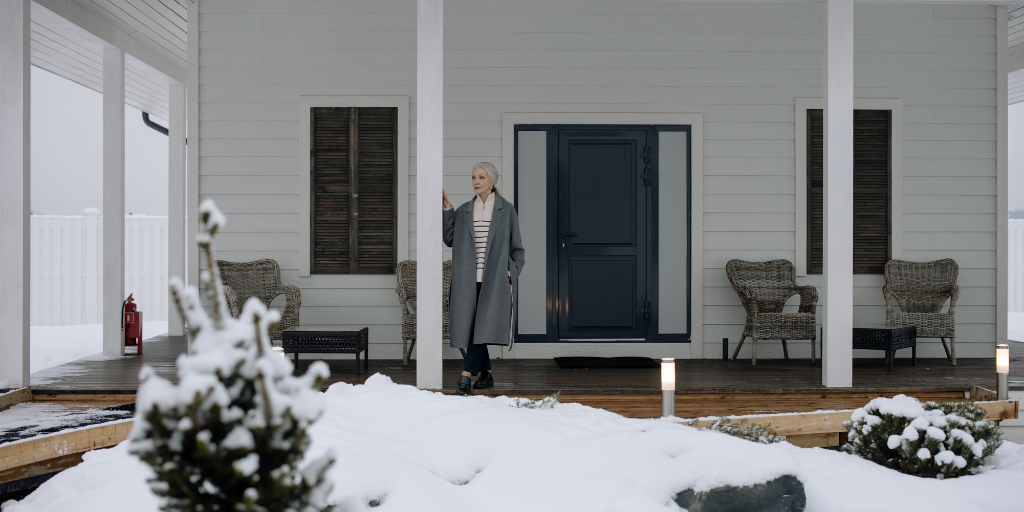

The local real estate market can have a significant impact on porch-related home value increases. In areas where outdoor living spaces are highly valued, such as warm and sunny regions or neighborhoods with a strong emphasis on outdoor recreation, a well-designed porch can add significant value to a home.
Conversely, in areas where outdoor living spaces are less desirable or not in demand, the value added by a porch may be minimal. Therefore, it’s important for homeowners to research the local real estate market and consult with a professional before investing in a porch addition to ensure they are making a sound financial decision.
Additionally, the local real estate market can impact the ROI of a porch addition. In areas where home values are already high, the ROI for a porch addition may be lower, as the home’s value is already close to its maximum potential.
Conversely, in areas where home values are more modest, a porch addition may have a higher ROI, as it can significantly increase the home’s overall value. Ultimately, the local real estate market is a critical factor in determining the value added by a porch addition, and homeowners should carefully consider this when making any decisions regarding home renovation or improvement projects.
Are there any tax benefits to adding a porch to a home?
In most cases, there are no direct tax benefits to adding a porch to a home. Porches are considered a capital improvement, meaning they are a permanent addition to the home that increases its overall value. While this can potentially increase the homeowner’s property tax bill, there are typically no tax deductions or credits associated with porch additions.
However, there may be some indirect tax benefits to adding a porch to a home. For example, if the porch addition includes energy-efficient features, such as insulated windows or a high-efficiency heating and cooling system, the homeowner may be eligible for federal or state tax credits for energy-efficient home improvements.
Additionally, if the porch addition is part of a larger home renovation project, such as a historic preservation project, the homeowner may be eligible for tax credits or deductions related to the renovation project. Homeowners should consult with a tax professional to determine if they are eligible for any tax benefits related to a porch addition or other home improvement projects.
How long does it take for a porch to pay for itself in increased home value?
The length of time it takes for a porch to pay for itself in increased home value can vary depending on several factors, including the size and design of the porch, the materials used, and the local housing market.
According to Remodeling Magazine’s 2021 Cost vs. Value Report, the national average ROI for a mid-range porch addition is about 54.9%, meaning homeowners can expect to recoup about 55% of the project cost in increased home value. For a high-end porch addition, the average ROI is about 46.7%, indicating that homeowners can expect to recoup nearly half of the project cost in increased home value.
Based on these averages, it could take anywhere from several years to over a decade for a porch to pay for itself in increased home value. However, this timeline can be impacted by the local housing market and the specific features of the porch addition. In areas where outdoor living spaces are highly valued, a well-designed porch may provide a faster return on investment.
Additionally, if the porch includes energy-efficient features or is part of a larger home renovation project, it may provide additional long-term cost savings that can impact the overall return on investment. Ultimately, the length of time it takes for a porch to pay for itself in increased home value will depend on a variety of factors and should be carefully considered by homeowners before investing in a porch addition.
Do screened-in porches increase home value more than open-air porches?
Whether a screened-in porch increases home value more than an open-air porch can depend on various factors, such as the location of the home, the climate, and the local housing market. A screened-in porch can offer homeowners the benefits of being outdoors while providing protection from insects, direct sunlight, and inclement weather.
This can be particularly appealing in areas with high mosquito populations or where the weather can be unpredictable. In some cases, a screened-in porch may be viewed as more desirable by potential home buyers and could potentially increase home value more than an open-air porch.
However, in areas where the climate is mild and outdoor living spaces are highly valued, an open-air porch may be more desirable and could potentially increase home value more than a screened-in porch. An open-air porch can offer homeowners the benefits of fresh air, natural sunlight, and unobstructed views, which can be particularly appealing in areas with scenic views or where the weather is consistently pleasant.
Ultimately, whether a screened-in porch or an open-air porch increases home value more will depend on various factors, and homeowners should consider their specific location and local housing market before making a decision.
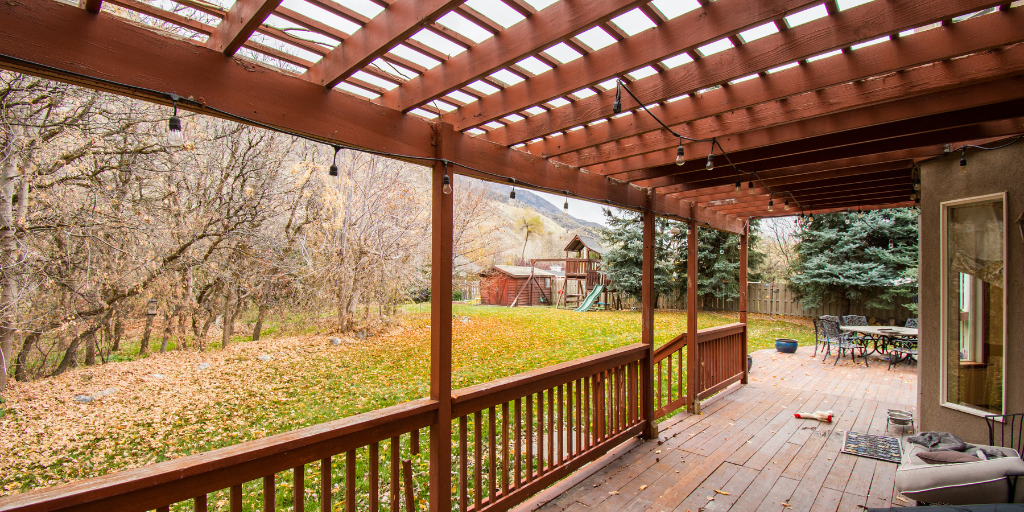

How much do porch renovations impact home value compared to new porch construction?
The impact of porch renovations on home value compared to new porch construction can depend on the specific renovations being made and the condition of the existing porch. Renovating an existing porch can be a cost-effective way to improve its functionality and aesthetic appeal while potentially increasing home value.
For example, replacing worn or outdated materials, adding new lighting or fixtures, or installing energy-efficient features can all enhance the porch’s overall appeal and potentially increase home value. However, the extent to which these renovations impact home value will depend on the specific upgrades being made and the local housing market.
On the other hand, new porch construction can provide homeowners with greater flexibility in terms of design and materials and may be more appealing to potential home buyers looking for a specific style or feature. A new porch can also be designed to complement the existing home’s architecture and landscaping, potentially enhancing its overall curb appeal and increasing home value.
However, the cost of new porch construction can be significantly higher than renovating an existing porch, and the return on investment may take longer to recoup. Ultimately, whether porch renovations or new porch construction have a greater impact on home value will depend on the specific project and should be carefully considered by homeowners.
What are some easy and affordable ways to increase a porch’s impact on home value?
There are several easy and affordable ways to increase a porch’s impact on home value, even without undertaking a major renovation or construction project. One simple way to enhance a porch’s appeal is to add potted plants or flowers to the space.
Plants can add color and texture, creating a more inviting and pleasant atmosphere for outdoor relaxation or entertainment. Another affordable way to increase a porch’s impact is to add outdoor lighting, such as string lights or lanterns. Outdoor lighting can not only enhance the porch’s ambiance but also provide added safety and security.
Another easy and affordable way to increase a porch’s impact on home value is to add outdoor furniture or accessories that complement the porch’s design and style. Depending on the size and layout of the porch, homeowners can add a variety of seating options, such as chairs, benches, or a porch swing.
Adding outdoor rugs, pillows, or other accessories can also help create a cozy and inviting atmosphere. By incorporating these simple and affordable enhancements, homeowners can increase their porch’s impact on home value without breaking the bank.
Cost of a screened-in porch
When considering a screened-in porch for your home, you should know that it will add approximately 300 square feet to your home. This extra space can be used for relaxing, entertaining guests, or even for an office or exercise room. In addition, a screened-in porch will also allow for a second Christmas tree. The additional space is an excellent investment. If you are looking for a home improvement project that will increase the value of your home, the screened-in porch is a great option.
When choosing screen materials for your screened-in porch, there are several factors to consider. The material should stand up to the elements. The cheapest option is fiberglass, but that does not mean it’s the best. It should also prevent dust, pollen, and bugs from entering. A porch enclosure system, such as Eze-Breeze, will help keep out these pesky pests.
The cost of a screened-in porch project will vary depending on the location. Depending on the materials and the complexity of the project, you may pay less than you’d expect if you just added a deck to your house. Adding solar screens or motorized retractable screens will raise the cost. You should also consider the cost of the materials and the cost of labor. A screened-in porch with a balcony can also increase the price of your home.
Adding a screened-in porch to increase the value of your home is an excellent way to improve its appeal and value. But there are many factors to consider when determining the cost of a screened-in porch. While some factors are more expensive than others, a good construction team will always find ways to reduce the costs without sacrificing the quality. The roof of a screened-in porch will cost anywhere from $3,200 to $6,000, and if you add a screened-in porch to increase the value of your home, the price will likely increase.
The cost of a screened-in porch to add value to your home is largely dependent on the area you live in and the materials that you use. While pressure-treated wood and other materials can increase the cost, the main components of a screened-in porch are the sides screens, door, decking, and roof. These materials will determine the final cost of the project, and you should contact several local contractors to get an idea of the costs associated with the project.
Cost of converting a three-season porch to a four-season room
Converting a three-season porch into a year-round room can add considerable value to a home, but it also requires extensive work. The cost of converting a three-season porch to a four-season room will range from $25,000 to $75,000, depending on size and materials. The larger the space, the more labor and materials will be required.
The three-season porch is often a welcome addition to a home. During the summer months, you can enjoy a three-season porch, but in colder climates, it’s impossible to use it. Thankfully, there are many ways to turn your three-season porch into a four-season room, so you can use it all year round. You can add large insulated windows or screens and enjoy a combination of indoor-outdoor living.
The first step to a successful sunroom conversion is to determine how much insulation the existing three-season porch or enclosed porch has. The conversion process will require removing interior drywall and installing additional insulation. You may also need to install HVAC, which is an additional expense. If the room will be used during the coldest months, you may have to replace some of the existing ductwork.
Converting a three-season porch to a more usable four-season room can increase home value. The new room can be heated with an existing system, or you can install a new one if you need to. However, before deciding on the cost of a conversion, you should consider the scope and size of the project. Depending on the scope and size of your project, the total cost can range from $5,000 to $20,000.
Adding a four-season room to your home will add significant square footage. These rooms are rare in the Chicagoland area and require little maintenance. However, they can be an excellent investment if designed properly. If you’re planning to sell your home in the future, the added space could increase its value. But how much will it cost to add a four-season room to your home?
Cost of adding a fireplace to a porch
Adding a fireplace to a porch adds value to your home and improves your outdoor living space. In fact, a fireplace can boost your home’s value by as much as 12%. And it doesn’t hurt that potential buyers love this type of feature, either. A 2007 study by the National Association of Realtors found that 46% of home buyers would pay an extra $1,220 for a house with a fireplace. In addition, homeowners who have fireplaces in their homes attract buyers who are looking for special memories.
If you’re planning to install a fireplace in a porch, you should check your local building codes. These codes have very specific requirements for outdoor fireplaces, including the distance between the fireplace and combustible materials. In some cases, you’ll have to have additional electrical work and landscaping work done in order to install a fireplace. But the benefits of adding a fireplace to a porch are well worth the investment.
While adding a fireplace to a porch increases the home’s value, it should be installed in the most-used room. Most people use their living room and family room, which make these rooms the best choices. They also tend to be the easiest to heat, which is an added bonus. In addition, the installation of a fireplace will require more work than installing one in a different room. During the installation process, floor joists should be reinforced and the size of the firebox, damper opening, and chimney should be carefully considered.
Installing a fireplace can be expensive, ranging anywhere from several hundred to thousands of dollars. You can purchase a factory-built gas/propane fireplace for around $2,000, or you can hire a trades person to install it. A chimney extension, a fireplace throat, and a mantle or surround will cost anywhere from $2,400 to $6,000, depending on what materials you choose. The cost of installing a fireplace will also depend on your local building codes.
Depending on your needs, a fireplace installation can be a simple or complicated project. Whether you opt for a prefabricated model or a custom build, it is important to get several quotes and check out their credentials. Check out online reviews of the contractor and select the company with the most experience in the industry. Make sure to choose a fireplace that matches the size and BTU output of your porch.
Final thoughts on how much does a porch increase home value
As we conclude on how much does a porch increase home value, always be mindful of the information shared above. A well-designed, well-built, and well-maintained porch can enhance a home’s curb appeal and provide additional living space that can be attractive to potential buyers.
However, it’s important to consider all factors that impact a home’s value before investing in a porch or any other home improvement project. If done correctly, adding a porch can be a worthwhile investment that can add both financial and lifestyle benefits to a home.
